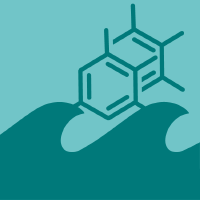Topic Menu
► Topic MenuTopic Editors

2. Department of Organic Chemistry, Faculty of Pharmacy, University of Santiago de Compostela, 15705 Santiago de Compostela, Spain

Safety and Toxicological Risks of Medicinal Plants and Natural Products: Mechanistic Insights
Topic Information
Dear Colleagues,
The plant kingdom comprises a high number of species, producing a variety of bioactive compounds with different chemical scaffolds. According to earlier appraisals, various plant species have been systematically examined pharmacologically and phytochemically. Though currently, the percentage of well characterized species is possibly higher owing to continuing research efforts, it is still possible that there is a huge number of plant compounds that are not well investigated pharmacologically in the plant species described so far. The revived scientific interest in plant-derived drug discovery is paralleled with major scientific and technological advances in significant research fields, with better understanding of diseases and their fundamental mechanisms, advances in screening methods and analytical equipment, increasing number of targets available for testing, and better possibilities for optimization of natural leads using synthetic modification strategies. However, it is clear that the current challenges regarding herbal products must be overcome. These challenges generally include the difficulty of cultivating certain species, unconscious overuse of medicinal and aromatic herbs, purity of herbal drugs, loss of endangered plant species, deforestation and urbanization, quality, safety, efficacy, dosage, and standardization.
Several supporters of medicinal plants contend that products with a long history of popular use are usually safe when used correctly at common therapeutic doses. A critical question is the extent to which the absence of evidence of toxicity could be taken as evidence of safety of medicinal plants or the absence of toxicity. Whether the absence of archives of adverse effects is an indication of lack of toxicity depends on the type of toxic effect and the probability of perceiving such an adverse effect under the environments prevailing in the traditional usage. Acute symptoms and short-term toxic effects are likely to be recognized and associated with medicinal plants. Consequently, the absence of such observations provides some evidence of safety in these certain endpoints. Long-term adverse effects are unlikely to be related to the popular use of a medicine, without an adequately designed epidemiology study is undertaken. Therefore, the absence of evidence of these adverse effects in the context of traditional usage of medicinal plants is not evidence of the absence of the possibility to cause them. As far as drugs are concerned, safety is expected only when the null hypothesis has not been invalidated after being challenged by a correctly designed and comprehensive set of preclinical and clinical studies, which have plenty of statistical power to reject false hypotheses.
We welcome authors from all parts of the world to contribute with articles that evaluate mechanistic insights into preclinical studies for safety assessment and potential toxicity of natural products. We are particularly interested in articles that describe the assessment of toxicological activities in vitro, in vivo, in silico, and cell-based assays and compile this effect using active molecules from natural sources.
This Research Topic provides a venue for authors from various disciplines to disseminate crucial information about the effect of medicinal plants and natural products with safety assessment and potential toxicity. The subtopics to be covered within this collection are listed below, but not limited to:
- Perspectives (based on systematic reviews) such as predictions, estimations, comparisons;
- In vivo, in vitro, in silico, and cell-based assays on plants;
- Clarification of the toxic effect mechanism;
- Evidenced-based research and clinical trials on natural products related to safety assessment and toxicological properties;
- Drug delivery systems prepared with natural compounds that reduce side effects and provide targeting and also increase efficiency in cancer studies.
Prof. Dr. Eduardo Sobarzo-Sánchez
Prof. Dr. Esra Küpeli Akkol
Topic Editors
Keywords
- drug development
- natural product
- in vivo
- in vitro
- in silico
- cell-based assay
- toxicity
Participating Journals
| Journal Name | Impact Factor | CiteScore | Launched Year | First Decision (median) | APC |
|---|---|---|---|---|---|

Biomolecules
|
5.5 | 8.3 | 2011 | 16.9 Days | CHF 2700 |

Current Issues in Molecular Biology
|
3.1 | 2.4 | 1999 | 13.5 Days | CHF 2200 |

International Journal of Molecular Sciences
|
5.6 | 7.8 | 2000 | 16.3 Days | CHF 2900 |

Marine Drugs
|
5.4 | 9.6 | 2003 | 14 Days | CHF 2900 |

Molecules
|
4.6 | 6.7 | 1996 | 14.6 Days | CHF 2700 |

Plants
|
4.5 | 5.4 | 2012 | 15.3 Days | CHF 2700 |

MDPI Topics is cooperating with Preprints.org and has built a direct connection between MDPI journals and Preprints.org. Authors are encouraged to enjoy the benefits by posting a preprint at Preprints.org prior to publication:
- Immediately share your ideas ahead of publication and establish your research priority;
- Protect your idea from being stolen with this time-stamped preprint article;
- Enhance the exposure and impact of your research;
- Receive feedback from your peers in advance;
- Have it indexed in Web of Science (Preprint Citation Index), Google Scholar, Crossref, SHARE, PrePubMed, Scilit and Europe PMC.

